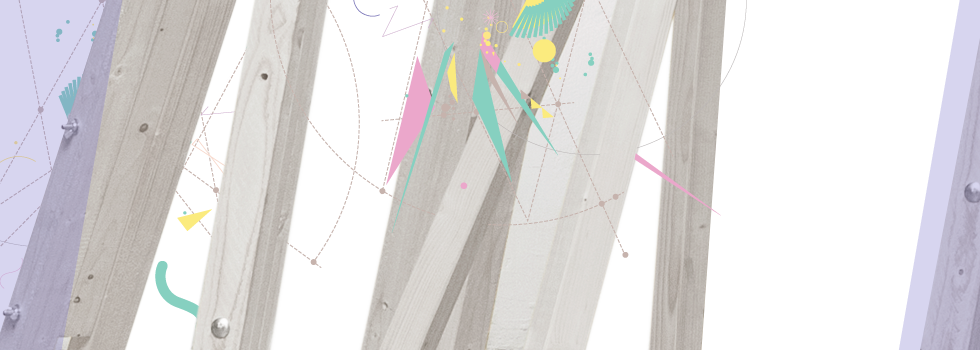SOUND:FRAME FESTIVAL 2011 PERFOMANCE
In 2011, the sound:frame festival celebrated its fifth birthday, and dealt with the core theme perFORMance theoretically and artistically. For a long time, visual implementations were mostly observed through formal and aesthetic aspects. sound:frame wanted to put an emphasis on the process-like character of live performances, and address the real-time development of content and form.
SOUND:FRAME FESTIVAL 2010 DIMENSIONS
The sound:frame festival 2010, dimensions, focused on various spatial qualities and their structuring as well as on extending dimensions.
For the first time the sound:frame exhibition of 2010 did not concentrate on a single place, but expanded to different exhibition spaces all around Vienna as well as urban space.
While three-dimensional space acted as home ground and "container" for artistic action, actors, audience and atmosphere, time was added as the fourth dimension, in which music and film were experienced.
Specially customized installations, live-performances and panel discussions revealed the inner-workings of implementing audio:visual concepts and spatial theories.
SOUND:FRAME FESTIVAL 2009 EVOLUTION REMIXED!
For the first time in 2009 sound:frame had two major focuses. Along the lines of EVOLUTION REMIXED! a historical review of audiovisual development was given, while approaching various artistic trends: the beginnings of experimental cinema in the 20s, (liquid-) lightshows of the 60s and current multimedia work.
The second emphasis was put on highlighting artistic remix strategies that are crucial to electronic music as well as its visualisation.
Over the course of an exhibition the typical method and the concept behind it were theoretically and thematically discussed and analysed.
SOUND:FRAME FESTIVAL 2008
Evolving from a small exhibition with only 100 square meters at the Künstlerhaus Passagegallery, the sound:frame exhibition has now moved to the upper floor that provides 700 square meters.
Clearly stepping away from using canvases and screens, projections and animations occupied the whole interior architecture of the upper floor, turning a huge inflatable by the artist group persona non grata at the ceiling of the exhibition space into a projection sculpture.
For his room-in-room installation the Weimar artist Ecce Homo used a string instrument to influence a projection that surrounded the interior space.
A space installation by the artists luma.launisch and Gabriel Kogler took the visitors on a passionate and unique, audio:visual journey.
While Pepi Öttl and Georg Eisnecker focused on analogue work, media artist muk and filmmaker Frederick Baker used VMS beamers for space installations. 2008 the festival’s program was extended by workshops, lectures and panel discussions at the Ranftlzimmer/ Künstlerhaus.
On the opening day the Audimax at the Vienna University of Technology acted as home ground for the Parisian label heads of Versatile Records Château Flight, who added new sound to the silent movie “Les Vampire” by Louis Feuillade from 1915, while once again brilliantly highlighting the interaction between music and moving images. The line-up ranged from international musicians to visualists such as Deadbeat – live (cynosure/ ˜scape, Berlin/ Montreal), Sleeparchive – live (Berlin), Markus Kienzl and Timo Novotny – live AV (Sofasurfers, Vienna), Comtron – live (Blacklabel/ Rushhour, Amsterdam), Bruno Tait, Uli Sigg and Lichtfront (Bandbreite Kollektiv Köln), Pfadfinderei (bpitch control, Berlin), VJ Anyone (NE1Co, London), Tagtool (Strukt Network, Vienna), Tofa (sf united, Berlin), Lichterloh (Vienna), Eyefatigue (Berlin), Elektro Moon (Krakau), luma.launisch (eternal frame, Vienna) or eYeM (pooool, Vienna).
Other festival highlights included AV-acts, specially conceived audio:visual shows such as depart’s live performances (sound:frame AV, Vienna) and a memorable audio:visual life performance by the artists Jan Jelinek (˜scape, Berlin) and Karl Kliem (Dienststelle, Frankfurt) at the Künstlerhaus.
SOUND:FRAME FESTIVAL 2007
The kickoff for sound:frame happened when Künstlerhaus k/haus director Peter Bogner invited Eva Fischer to curate an exhibition. An art history student herself, she had started working on a concept for an audio:visual project a couple of years earlier. Künstlerhaus was the platform for Eva to make her ideas become reality. On a tiny exhibition space of only about 100 square meters at Künstlerhaus Passagegalerie, she managed to put together the first sound:frame exhibition. But this first version already had a lot to offer. The main idea was to have different visualists perform to the same music in their very own way. Eva Fischer invited Jan Wysozky to produce a soundtrack for sound:frame, and asked three visualist teams to visually interpret the music. Markus Wintersberger, Scarab und 4youreye presented their results side by side, which enabled the audience to plunge into three different visual styles and examine their effect. Additionally, a couple of Austrian visualists like OchoReSotto, Motionlab or FreakA presented their video art.
In order to display the processuality of this young art form, live performances were a mandatory part. The curator Eva Fischer hosted six evenings filled with mostly Austrian live program over the course of only two weeks. DJs, visualists and audio live acts like Electric Indigo, Jeff Milligan, Microthol, Fritz Fitzke, Flimmerflitzer or Mimu performed in the Künstlerhaus' cinema lounge.
The first sound:frame festival was a huge success, and after only a few days into the festival, Künstlerhaus asked sound:frame to realize an exhibition in their big exhibition space the following year.




